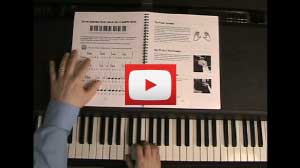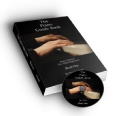Classical Piano Composers
On these pages you'll find information about some of the most well-known classical piano composers.
The term "Classical Piano" generally refers to piano music that was composed and notated in Europe in the period of time from around 1750 to the early 20th century. Some of the distinguishing elements of classical piano include musical development of repeated motifs, alteration of motifs, thematic expansion and the use of notation to fully realize the composer's intent.
The accomplished classical pianist has to develop technical mastery of the instrument, good sight reading skills, a solid understanding of tonal and harmonic concepts, and familiarity with musical styles from different periods.
Time Divisions (Approximate)
Early
Medieval - 450 to 1400
Renaissance - 1400 to 1600
"Common Practice" Period
Baroque - 1600 to 1750
Classical - 1750 to 1820
Romantic - 1820 to 1910
Modern and Contemporary - 20th Century
Medieval and Renaissance Periods
During the Medieval period, music was mostly monophonic, typified by the Gregorian chants and "plainsong." The Gregorian monks developed a type of musical notation that was a precursor to the modern musical staff. Other instruments were combined in the later Medieval years to create polyphonic music.
The Renaissance brought with it an expanded use of instrumentation, including some early keyboard instruments. The organ was becoming more widely used in churches, and with it the need for a more standardized notation was realized. Also, the printing press was in wide use, furthering the development of standard notation. Music was written for social dancing, and bass instruments were first developed.
The later Renaissance brought the common use of the harpsichord and clavichord, the two predecessors to the modern piano. Other instruments gaining wider use included lutes, flutes, bagpipes and the viol. By the late 16th century, more brass and string instruments were being used, including many that are still in use today.
Baroque Period
By the start of the Baroque period, musical notation was taking the shape that we see today. Baroque music is known for its complex counterpoint, exemplified by the works of J.S. Bach; who wrote for the harpsichord, clavichord, and organ, plus many other instruments. The concept of "equal temperment" was taking hold. (Ex: Bach's "Well-Tempered Clavier") Composers were exploring the realms of major and minor keys and the use of chromaticism. The sonata form was starting to develop, and some early concertos were written.
Though many of the pieces from the Baroque era were written for the harpsichord, they survive today as an integral part of classical piano music.
More about Baroque Composers: Bach, Handel, Scarlatti, Telemann, Rameau, Purcell
Classical Period
The Classical period brought a standardization of the norms of composition, and at the same time, the makeup of the orchestra was also being standardized. The symphony was fast becoming the preeminent musical form.
During this period the piano became the dominant keyboard instrument. Though the first known piece composed for the piano was created in 1732, it took forty years for before the piano was the primary instrument for composers. Muzio Clementi and Wolfgang Amadeus Mozart were among the first composers for the piano forte. Beethoven used his great virtuosity to exploit the instrument to its full potential.
The piano forte's greater volume and dynamic range, plus the ability for more expression enabled the piano to overtake the harpsichord and clavichord as the most popular keyboard instrument. By the turn of the 19th century, pianos were found throughout Europe. During this period much of what we think of as "classical piano" was composed.
More about the Classical Period Composers: Mozart, Beethoven, Haydn, Clementi
Romantic Period
The Romantic period found composers looking for more expression and emotion in their works. Experimentation with form, rhythm, and melody flourished during this period. New elements of form, including the "fantasia" and "nocturne" were born. The composers' works were more dissonant and colorful, using more tension and chromaticism in their melodies.
During this period "classical" music began to spread beyond Europe, and towards the end of this period a "nationalism" movement started to grow. Some of the great composers of this era include Beethoven, Schubert, Mendelssohn, Chopin, Schumann, and Liszt. Later composers include Wagner, Verdi, Tchaikovsky, Dvorak and Grieg.
Modern and Contemporary
The 20th century started with a "sub-movement" of French Impressionistic composers including Ravel and Debussy. Further dissonances were explored, and composers worked with under-utilized scales such as the whole tone and pentatonic scales, challenging the accepted notion of what "classical piano" and "classical music" is.
The "Modernism" movement that grew after World War I rejected the norms of traditional tonality and structure that defined the "Common Practice" period. Previously unused instruments were employed, and the rule book was thrown out. The twelve tone scale and microtonal scales were explored. Notable composers of the 20th century include Schoenberg, Ives, Bartok, Stravinsky, and Prokofiev.
More about 20the Century Composers: Schoenberg, Ives, Bartok, Stravinsky, Prokofiev,
Start Playing Piano Today with the Piano Guide Quick Start Course!
Easy to follow step-by-step lessons designed for adult beginners. The next best thing to private lessons!
What You'll Learn:
- Notes on the piano/keyboard
- Proper fingering
- C major scale
- Chords
- How to read music
- And much more!

Video lessons - watch as I play everything for you.

